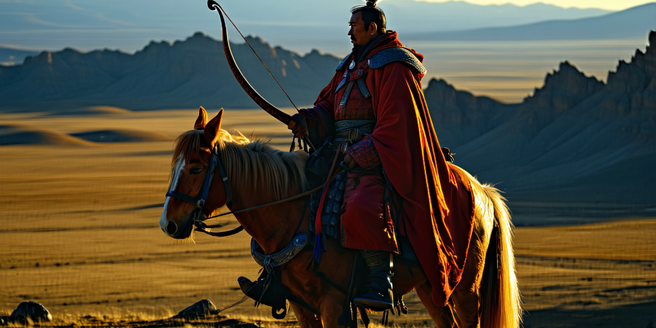
Overview of the Mongol Empire’s Expansion
The Mongol Empire expanded rapidly under the leadership of Genghis Khan, who unified the nomadic tribes of Mongolia and led them to conquer vast territories. Their military campaigns extended across Asia, the Middle East, and into Europe, resulting in the largest contiguous land empire in history. The Mongols were known for their mobility and innovative tactics. They effectively used horse archers and adapted to varying environments, which allowed them to overwhelm larger, more established armies. The empire’s expansion facilitated trade and cultural exchange along the Silk Road, contributing to a period of increased connectivity between the East and West. Despite their reputation for destruction, the Mongols also imposed order and stability across conquered lands, bolstering economic activity and fostering an era of relative peace known as the Pax Mongolica.
Climate Patterns in the 13th Century
In the 13th century, the climate played a pivotal role in shaping historical events, including the Mongol invasions. The period experienced a relatively warm climate phase known as the Medieval Warm Period, which affected various regions around the world. In the steppes of Central Asia, where the Mongols originated, this warmer climate led to increased grassland productivity, which supported larger herds of livestock. The abundance of resources contributed to the Mongols’ ability to sustain their armies during their extensive campaigns. However, climate patterns were not uniform across the globe, and the Mongols often encountered diverse weather conditions in their conquests. These climatic variations sometimes posed challenges, requiring adaptability and resilience from the Mongol army. Understanding these climate patterns provides crucial insights into how environmental factors influenced historical developments.
The Role of Weather in Mongol Military Success
Weather conditions significantly impacted the Mongol military campaigns, often aiding their conquests. The Mongols harnessed their understanding of weather patterns to time their campaigns effectively. For instance, the harsh winters of Eastern Europe did not deter them; instead, frozen rivers and hard ground facilitated the swift movement of their cavalry. In contrast, the dreaded heavy rains of monsoon seasons in Southeast Asia slowed their progress and posed logistical challenges. By wisely avoiding battles during unfavorable seasons and exploiting weather conducive to their style of warfare, the Mongols maintained their momentum. Their success was not solely due to military prowess but also a keen awareness of environmental factors, demonstrating an intrinsic connection between weather and the Mongols’ unparalleled military achievements.
Adaptation Strategies of the Mongol Army
The Mongol army’s adaptation strategies were integral to their formidable expansion. Operating in diverse climates and terrains required exceptional flexibility and resourcefulness. They were experts at employing lightweight and highly mobile cavalry units that could traverse vast distances quickly. Learning from the environments they encountered, the Mongols incorporated local knowledge and tactics, such as siege warfare techniques from the Chinese. Logistically, they maintained supplies by moving swiftly and living off the land when possible, relying on horses not only for transportation but also for sustenance in dire times. Their ability to adapt to different climates and situations allowed them to overcome natural obstacles and logistical challenges swiftly. This adaptability was crucial in maintaining their unbeaten record in numerous campaigns across varying landscapes.
Impact of Climate on Local Populations
The Mongol invasions significantly impacted local populations, with climate playing a vital role both directly and indirectly. As Mongol forces moved through different regions, they often disrupted existing agricultural systems, leading to food shortages exacerbated by unfavorable climate conditions. In some areas, periods of drought or excessive rainfall added strain on local resources, worsening the social and economic turmoil caused by the invasions. Populations were often displaced, and survivors faced challenges in rebuilding their societies under Mongol rule. On the other hand, the Pax Mongolica period fostered by the Mongols’ stable governance allowed some regions to recover and even thrive despite the initial devastation. The blend of military conquest and changing climate patterns reshaped the demographic and economic landscapes across Asia and Europe.
Long-term Environmental Changes Post-Invasion
Following the Mongol invasions, the affected regions experienced long-term environmental changes. The widespread destruction of infrastructure during the initial conquests led to changes in land use patterns as populations adapted to new realities. In some areas, decreased agricultural activity resulted in reforestation, while in others, overgrazing by the Mongol herds altered the ecological balance. These changes impacted biodiversity and ecosystem dynamics, sometimes leading to desertification. Furthermore, the establishment of the Pax Mongolica facilitated trade and the diffusion of agricultural practices along the Silk Road, introducing new crops and farming techniques to different regions. This cross-cultural exchange often led to agricultural intensification in some areas, counterbalancing the initial environmental disruptions. The legacy of Mongol rule thus left a complex tapestry of both positive and negative environmental impacts.
